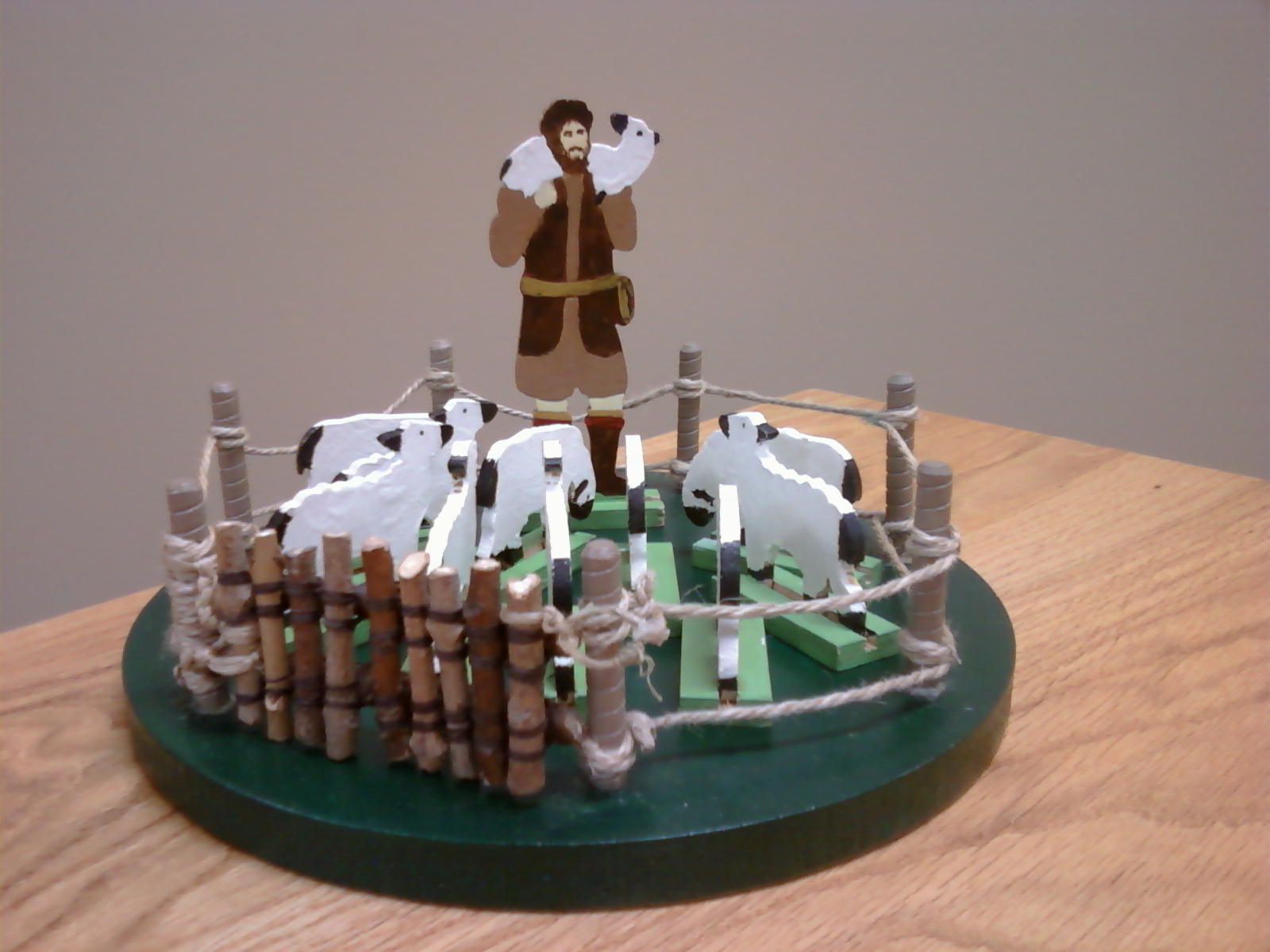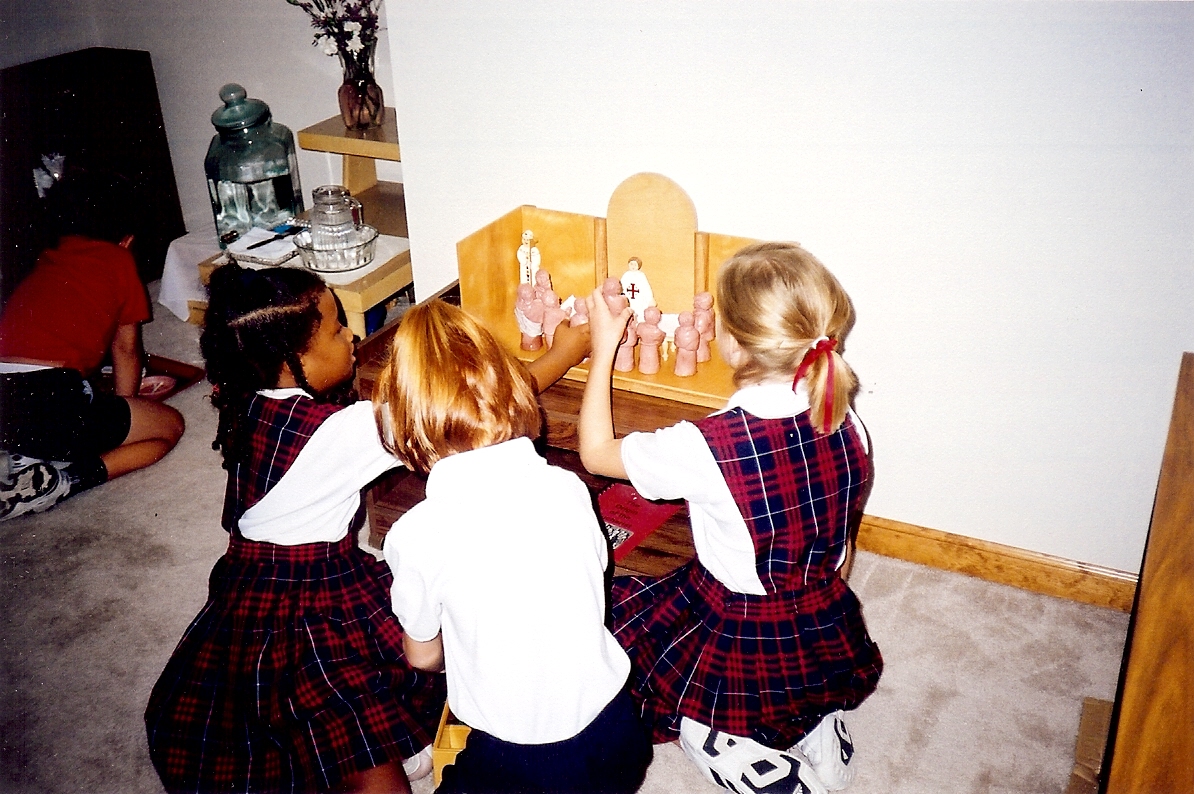The Catechesis of the Good Shepherd is an approach to the religious formation of children. It is rooted in the Bible, the liturgy of the church, and the educational principles of Maria Montessori. Catechesis of the Good Shepherd (CGS) is based on the belief that the young child is already in relationship with God.
Listen to Archbishop Joseph F. Naumann’s podcast on Catechesis of the Good Shepherd:
http://archkck.libsyn.com/catechesis-of-the-good-shepherd

INFORMATION ON BECOMING A CGS CATECHIST
Catechesis of the Good Shepherd (CGS) is not a published program. Through a CGS formation course, adults experience all the presentations that are given to children. Led by a formation leader recognized by the CGS National Association, course participants also discuss the theological and pedagogical principles that undergird the children’s presentations. They are guided in writing album pages of each of these presentations and are assisted in how to make many of the materials used for these presentations as well as in how to prepare the atrium.
To learn about courses offered nationwide, see: www.cgsusa.org
Click here for a list of all training courses in our region!
Click here to find a CGS class near you!
Application for Financial Assistance
HISTORY
Beginning in 1954, in Rome, Italy, Sofia Cavalletti (a Hebrew scholar) and her collaborator,Gianna Gobbi (a Montessori guide), developed an approach which not only appealed to the profound religious intuition of
children, but which evolved from the children themselves.
Catechesis of the Good Shepherd is held in a room called the atrium. This environment is carefully prepared to be a calm and inviting place for children. The adult CGS catechist will present aspects of Bible and Liturgy to the children each week; then the children will be able to choose and use the materials in the atrium that will help them grow in their love relationship with God.

Materials used in the Catechesis of the Good Shepherd have been designed over the last 50+ years to meet the developmental needs of the young child. These materials are based on the Montessori method of education, a method that addresses the needs of the whole child: body, mind and spirit. Also, children are divided into groups according to their developmental needs. Level I for 3-6 year olds; Level II for 6-9 year olds, and Level III for 9-12 year olds.
The National Association of the Catechesis of the Good Shepherd was formed in 1984 in North America with its main aim being that of “involving adults and children in a common religious experience in which the religious values of childhood are predominate.”
For more information, go to: www.cgsusa.org

To compare traditional educational methods to Montessori educational methods, go to:
http://www.montessori-namta.org/A-Paradigm-Shift
For an introduction to the Montessori Method of Education, go to:
http://www.montessori-namta.org/About-Montessori
For reading material about the Montessori Method, go to:
http://www.montessori-namta.org/Introductory-Book-List
FOR CLERGY
“CGS” is more than a catechesis for children. I believe that it is one of the new renewal movements for the Church, given to us by the Lord… allowing us a new way to receive and experience the gifts of the Lord through a contemplative listening of the Word and an active participation in the Sacraments of His Presence. I was introduced to this work while pastor at Saint John Neumann and it has affected my own spirituality in a powerful way.”
The Most Reverend David
P. Talley, M.S.W., J.C.D.
Auxiliary Bishop of Atlanta
For information on the conformity of CGS with the Catechism of the Catholic Church, and comments regarding CGS from several Bishops, go to:
https://www.cgsusa.org/about/dioceses.aspx


FOR EDUCATORS/CATECHISTS:
For question regarding the preparation CGS catechists receive, the “scope and sequence” of CGS, and how themes are addressed and their relevance to Church documents, see: www.cgsusa.org/about/dioceses.aspx
FOR CHILDREN WITH SPECIAL NEEDS
In Catechesis of the Good Shepherd we believe that we are “led by the child”; we desire to meet each child in the atrium wherever they are on their faith journey. In the Rome atrium, there was a woman in attendance with a developmental disability. Sofia Cavalletti commented, “…in here she has clarity.” It is really that simple! Once a child with disabilities is accepted into an atrium, many practical tasks remain: assessing the child’s abilities, identifying a catechist, and determining which materials are appropriate.
Do you have thoughts, needs, specific areas you are interested in learning more about?
Please contact Linda Sgammato at childrenwithdisabilities@cgsusa.org and she will help you begin to look at how to best serve children with disabilities in the atrium.